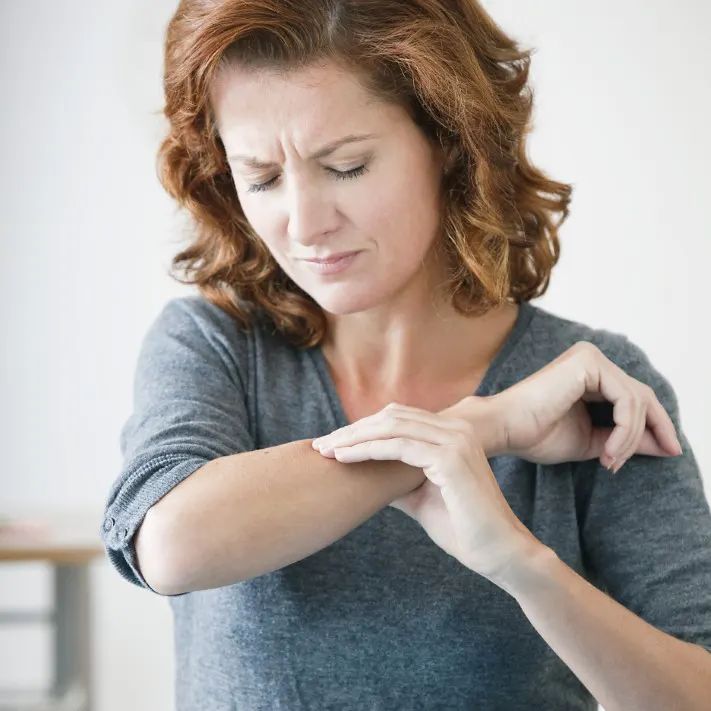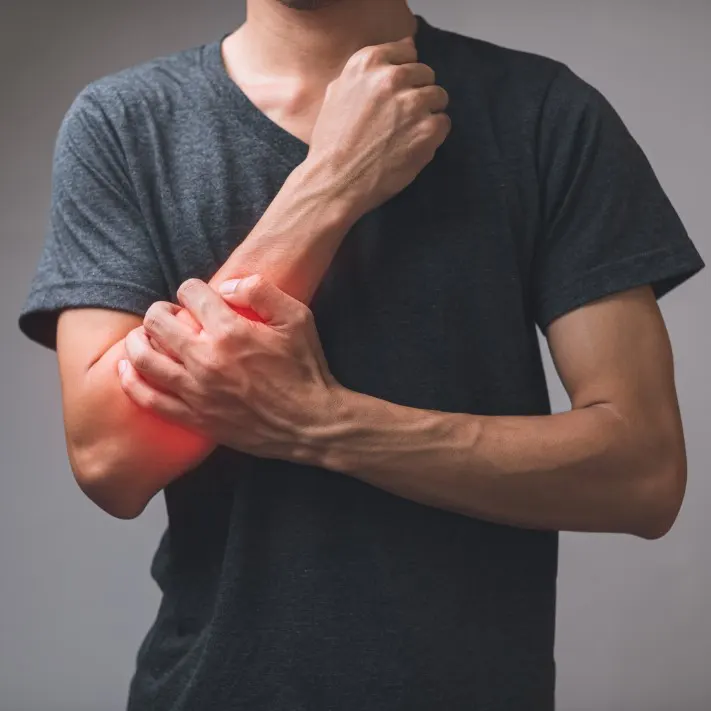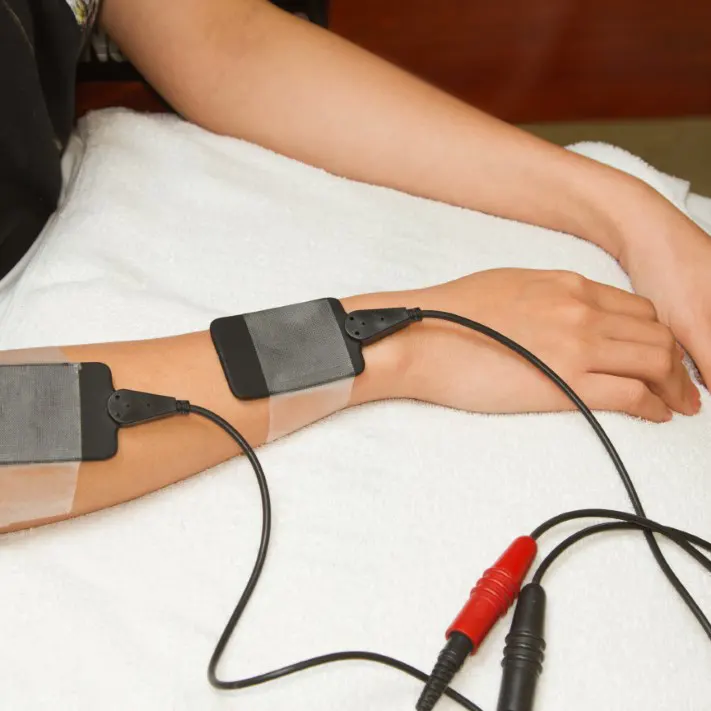What is Forearm Pain?
Most forearm pain stems from the relationship between the nerves and muscles located within the forearm. These nerves travel through tunnels within soft tissue close to the skin and other times through tunnels within the forearm’s muscles. When muscles in the forearm grow in size (which can occur after an injury of the elbow, forearm, or wrist) they place pressure on the nerve itself. Pain may be confined to the space between the elbow and wrist or cause radiating or referred pain that is felt in the upper arm or leading into the fingers.
Understanding Forearm Anatomy
The forearm is in the lower section of the arm, located between the elbow and the wrist. It is an important area of the arm because it positions the wrist and hand into their functional positions. The forearm contains the majority of the muscles needed to bend and extend your wrist and hand. The forearm also contains three nerves that travel through it on their way to the hand.
Causes of Forearm Pain
Forearm pain may be due to injuries, overuse, or conditions that cause inflammation. Most commonly it is related to nerve compression that occurs within the forearm. Forearm pain may be the result of:
- Pinched nerves
- Repetitive use injuries
- Poor ergonomics
- Jobs in construction, manufacturing, cashiering, cooking, or computer work
- Sewing, knitting, crafting, gardening
- An acute Injury from hitting the outside of the elbow
- An acute Injury, such as a fall
- Arthritis

Forearm Pain Conditions We Treat
Armworks Hand Therapy works exclusively with injuries and issues affecting the upper extremity. Our hand therapists have extensive knowledge and training in providing high quality forearm pain treatment. They regularly see patients with these common forearm conditions:
- Carpal tunnel syndrome
- Nerve impingement
- Fractures
- Muscle strain and contusion
- Tendon and ligament injuries
- Tendinitis
- Cubital tunnel syndrome

Forearm Pain Treatment
At Armworks, therapy for forearm pain is customized for each patient. At your first appointment, you will have a professional evaluation with a licensed hand therapist. After they assess your injury, answer your questions, and discuss your therapy goals; your hand therapist will create your unique forearm treatment plan. Your rehabilitation program may include:
- Treatment/instructions to reduce inflammation
- Manual Therapy
- Splinting for the elbow and/or wrist
- In clinic and at home exercise programs
- Education on correct use of your arm and injury prevention

Frequently Asked Questions
-
How will my forearm pain symptoms progress?
Forearm pain symptoms tend to start out as an occasional dull ache or brief sharp pains. Without treatment, this pain tends to become more frequent and last for longer periods of time. Eventually, forearm pain may cause you to avoid using your arm, which in turn creates weakness and loss of motion.
-
When should I seek forearm pain treatment?
If you are experiencing forearm pain, the earlier you can start hand therapy the better. The most common thing a hand therapist hears is, “I just thought it would go away by itself, so I waited to call.” Unfortunately, waiting to begin therapy usually makes your recovery period take much longer.
-
How long will my forearm pain treatment typically last?
The recovery time is typically shorter the quicker you can start therapy after your symptoms begin. A normal amount of recovery time for forearm pain is 2-4 weeks if starting early, and 4-8 weeks if starting later. Your hand therapist will continually monitor your progress and give you tools and techniques for lasting results.
-
When can I return to work after a forearm injury?
Returning to work after a forearm injury depends on what type of job you do and how much you use your elbow in your job. Believe it or not, computer-based jobs can often put the most stress on the muscles and nerves in your forearm. With some simple changes to your computer habits, you often do not need to miss very much work.
-
When can I return to playing sports after a forearm injury?
This will depend on the extent of your injury and the sport you are returning to. Forearm injuries typically have a 2-4 week healing time, if hand therapy is started early. If there is a delay between when the injury occurred and beginning therapy, the healing timeline is usually closer to 4-8 weeks. Sports that involve holding a racquet or club, like tennis, pickleball or golf, tend to require a longer period of rest than other sports do.
-
Does Armworks take my insurance?
Here is a list of the insurance plans accepted by SportsCare Physical Therapy and Armworks Hand Therapy. If you are unsure of your coverage or if your plan is accepted, please contact one of our offices. We are happy to assist you in learning about your benefits.
-
Where is Armworks located?
Armworks Hand Therapy has offices in Gresham, NE Portland, Clackamas, Beaverton, and Tigard. For location specific contact information click here.
